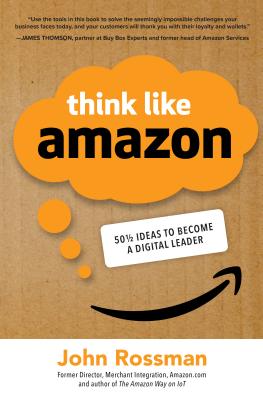Transforming Technologies to Manage Our Information: The Future of Personal Information Management, Part 2 (Paperback)
暫譯: 轉型技術以管理我們的信息:個人信息管理的未來,第二部分 (平裝本)
William Jones
- 出版商: Morgan & Claypool
- 出版日期: 2013-10-01
- 售價: $1,580
- 貴賓價: 9.5 折 $1,501
- 語言: 英文
- 頁數: 182
- 裝訂: Paperback
- ISBN: 1598299379
- ISBN-13: 9781598299373
-
相關分類:
Information-management
立即出貨 (庫存=1)
商品描述
With its theme, "Our Information, Always and Forever," Part I of this book covers the basics of personal information management (PIM) including six essential activities of PIM and six (different) ways in which information can be personal to us. Part I then goes on to explore key issues that arise in the "great migration" of our information onto the Web and into a myriad of mobile devices.
Part 2 provides a more focused look at technologies for managing information that promise to profoundly alter our practices of PIM and, through these practices, the way we lead our lives.
Part 2 is in five chapters:
- Chapter 5. Technologies of Input and Output. Technologies in support of gesture, touch, voice, and even eye movements combine to support a more natural user interface (NUI). Technologies of output include glasses and "watch" watches. Output will also increasingly be animated with options to "zoom".
- Chapter 6. Technologies to Save Our Information. We can opt for "life logs" to record our experiences with increasing fidelity. What will we use these logs for? And what isn’t recorded that should be?
- Chapter 7. Technologies to Search Our Information. The potential for personalized search is enormous and mostly yet to be realized. Persistent searches, situated in our information landscape, will allow us to maintain a diversity of projects and areas of interest without a need to continually switch from one to another to handle incoming information.
- Chapter 8. Technologies to Structure Our Information. Structure is key if we are to keep, find, and make effective use of our information. But how best to structure? And how best to share structured information between the applications we use, with other people, and also with ourselves over time? What lessons can we draw from the failures and successes in web-based efforts to share structure?
- Chapter 9. PIM Transformed and Transforming: Stories from the Past, Present and Future. Part 2 concludes with a comparison between Licklider’s world of information in 1957 and our own world of information today. And then we consider what the world of information is likely to look like in 2057. Licklider estimated that he spent 85% of his "thinking time" in activities that were clerical and mechanical and might (someday) be delegated to the computer. What percentage of our own time is spent with the clerical and mechanical? What about in 2057?
Table of Contents: Technologies of Input and Output / Technologies to Save Our Information / Technologies to Search Our Information / Technologies to Structure Our Information / PIM Transformed and Transforming: Stories from the Past, Present, and Future
商品描述(中文翻譯)
本書的主題為「我們的信息,永遠與常在」,第一部分涵蓋了個人信息管理(PIM)的基本概念,包括 PIM 的六個基本活動以及信息對我們個人而言的六種(不同)方式。第一部分接著探討了在我們的信息「大遷移」到網路及各種行動裝置上所產生的關鍵問題。
第二部分則更專注於管理信息的技術,這些技術有望深刻改變我們的 PIM 實踐,並透過這些實踐改變我們的生活方式。
第二部分共分為五章:
- 第五章:輸入與輸出技術。支持手勢、觸控、語音甚至眼動的技術結合在一起,以支持更自然的用戶介面(NUI)。輸出技術包括眼鏡和「手錶」手錶。輸出也將越來越多地以「縮放」的選項進行動畫化。
- 第六章:保存我們的信息的技術。我們可以選擇「生活日誌」來以更高的真實性記錄我們的經歷。我們將這些日誌用來做什麼?還有什麼未被記錄但應該被記錄的?
- 第七章:搜索我們的信息的技術。個性化搜索的潛力巨大,但大多數尚未實現。持續的搜索,位於我們的信息環境中,將使我們能夠維持多樣的項目和興趣領域,而無需不斷地在不同項目之間切換以處理進來的信息。
- 第八章:結構化我們的信息的技術。如果我們要保留、查找並有效利用我們的信息,結構是關鍵。但如何最佳地結構?以及如何在我們使用的應用程式之間、與其他人以及隨著時間與自己分享結構化的信息?我們能從基於網路的結構分享努力中的失敗與成功中學到什麼?
- 第九章:PIM 的轉變與轉型:過去、現在與未來的故事。第二部分以比較 Licklider 在 1957 年的信息世界與我們今天的信息世界作結尾。然後我們考慮 2057 年的信息世界可能會是什麼樣子。Licklider 估計他花了 85% 的「思考時間」在文書和機械活動上,這些活動可能(有一天)會被委派給電腦。我們自己有多少時間花在文書和機械活動上?2057 年又會如何?
目錄:輸入與輸出技術 / 保存我們的信息的技術 / 搜索我們的信息的技術 / 結構化我們的信息的技術 / PIM 的轉變與轉型:過去、現在與未來的故事





















